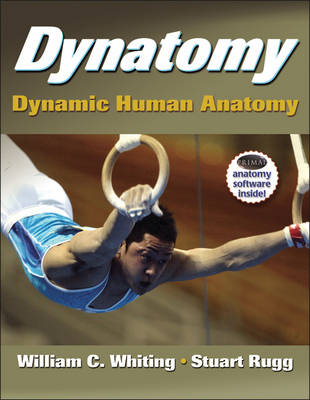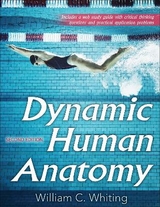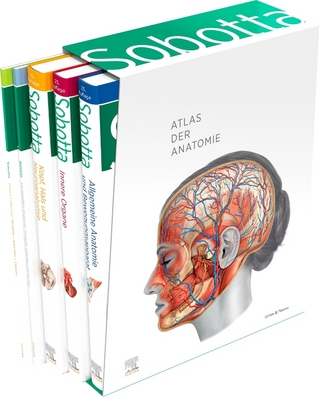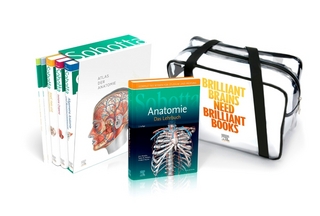
Dynatomy
Human Kinetics (Verlag)
978-1-4925-2415-1 (ISBN)
- Titel erscheint in neuer Auflage
- Artikel merken
Dynatomy: Dynamic Human Anatomy With Web Resource brings to life the wonders of human movement and applied anatomy. The book is for students of human performance who have completed an introductory human anatomy course and need a strong text in functional anatomy. The entertaining and easy-to-understand text considers fundamental movements--including posture, walking, running, jumping, throwing, kicking, and lifting--together with selected exercise and sport movements.
The emphasis of Dynatomy is on dynamic muscular motions rather than structural anatomy. Students benefit from a discussion of simple and complex human movements combined with an analysis of the muscles in motion. The text also introduces the muscle control formula and explains how students can use it to identify the ways in which muscles contract during various examples of human movement.
Part I presents an overview of the anatomical foundations of movement and the essential requirements for movement control. Part II examines dynamic movements and basic mechanics, muscular function, fundamental movements, and specialized movements.
The book is packed with features that will deepen students' appreciation of human movement:
- A 5-month online subscription to Interactive Functional Anatomy provides an engaging method for reviewing structural anatomy. This web-based software features models derived from MRI scan data that can be rotated and allow for layers of anatomy to be visually removed, which will help students fully understand the movements of functional anatomy.
- Unique illustrations and photos complement the text and improve understanding of difficult concepts.
- Chapter objectives, key terms, review questions, and summaries encourage students to interact with and remember the content.
- Movement analyses give students critical exposure to functional human movements.
To supplement the text, students have access to additional tables online that summarize the anatomical structures commonly found in introductory courses on human anatomy or functional anatomy. Tables are presented by region (upper extremity, spinal column, and lower extremity) and describe articulations (bones, joints, ligaments, and movements) and muscles (origin, insertion, actions, nerves, and blood supply).
Access to online interactive anatomy software included!
Completing the text is a 5-month subscription to Primal Pictures' Interactive Functional Anatomy. This software will help students thoroughly review components of structural anatomy through the use of computer-graphic models of human anatomy derived from MRI scan data. Fully interactive 3-D animations show muscular and joint function.
Interactive Functional Anatomy features computer graphic models of human anatomy derived from MRI scan data that can be reviewed from 30 distinct views. The models can be rotated and allow for layers of anatomy to be visually removed--from arteries down to major ligaments. Pop-up labeling appears as the 3-D models are viewed, and specific objects can be highlighted to show accompanying text about the selected structure, such as name, agonists, antagonists, proximal attachment, distal attachment, innervation, blood supply, function, injury mechanism, and pathology of injury. The text also includes information on common clinical pathologies such as sprains, tendinitis, repetitive-motion syndromes, and injury-related mechanics.
Clicking on structures will also bring up a list of all related animations of muscular function. The animations can be played and rotated, and all visible structures can be labeled. There are more than 70 examples of muscular function, including lateral flexion and rotation of the trunk, respiration, opening and closing of the lips, elevation and depression of the TMJ, and contraction of the pelvic floor.
William C. Whiting, PhD, is professor and director of the Biomechanics Laboratory in the department of kinesiology at California State University at Northridge, where he has won both the Distinguished Teaching Award and Scholarly Publication Award. Dr. Whiting earned his PhD in kinesiology at UCLA. He has taught courses in biomechanics and human anatomy for more than 15 years and has published more than 35 articles and 25 research abstracts. He is coauthor of Biomechanics of Musculoskeletal Injury. Dr. Whiting currently serves on the editorial board of ACSM's Health and Fitness Journal and serves as a reviewer for a number of scholarly journals. Dr. Whiting is a fellow of the American College of Sports Medicine and has served as president of the Southwest Regional Chapter of ACSM. He is also a member of the American Society of Biomechanics; the International Society of Biomechanics; the National Strength and Conditioning Association; and the American Alliance for Health, Physical Education, Recreation and Dance. In his leisure time, Dr. Whiting enjoys playing basketball and volleyball, reading, camping, and hiking. He lives in Glendale, California, with his wife, Marji, and son, Trevor. Stuart Rugg, PhD, is an associate professor and chair of the department of kinesiology at Occidental College in Los Angeles. He received his doctoral degree in kinesiology, with an emphasis in biomechanics, from UCLA. Since 1995 he has taught classes in human anatomy and biomechanics at Occidental College. Dr. Rugg has received Occidental's Outstanding Professor honor and is a three-time recipient of the college's Outstanding Teaching Award. His research focuses on the mechanical factors governing human performance and the effectiveness of sport equipment. Dr. Rugg has taught a class in musculoskeletal anatomy and biomechanics for UCLA Extension's certified fitness training program and for the Mount Saint Mary's department of physical therapy. He is a member of the National Strength and Conditioning Association and has worked as a design consultant for exercise and sport equipment companies. Dr. Rugg is an accomplished nature photographer and enjoys reading, camping, hiking, rafting, cycling, and weightlifting.
Part I. Anatomical Foundations and Essentials of Movement Control Chapter 1. Introduction to Human Anatomy and Movement Introduction to Human Anatomy Introduction to Human Movement Movement Across the Life Span Anatomical Concepts Levels of Structural Organization Anatomical References and Terminology The Study of Human Movement Chapter 2. Osteology and the Skeletal System Functions of the Skeletal System Bone Histology Skeletal System Organization Bone Adaptation Bone Health Chapter 3. Joint Motion and the Articular System Joint Structure and Classification Joint Motion and Movement Description Types of Joint Movement Joint Structure and Movement Chapter 4. Myology and the Muscular System Functions of Skeletal Muscle Structure of Skeletal Muscle Muscle Injury, Pain, and Soreness Chapter 5. Muscles of Movement Muscle Names Functional Actions of Muscles Muscles of Major Joints Part II. Applied Dynatomy Chapter 6. Mechanics of Movement Biomechanical Concepts Movement Mechanics Fluid Mechanics Joint Mechanics Material Mechanics Chapter 7. Muscular Control of Movement and Movement Assessment Muscle Function Muscle Action Coordination of Movement Movement Efficiency Muscle Redundancy Movement Assessment Chapter 8. Fundamentals of Posture, Balance, and Walking Posture and Balance Walking Chapter 9. Fundamentals of Running, Jumping, Throwing, Kicking, and Lifting Running Jumping Throwing Kicking Lifting Chapter 10. Analysis of Exercise and Sport Movements Resistance Training Two Common Sport Movements Dance Chapter 11. Future Directions of Human Movement Studies Advances in Medicine and Technology Demographic Trends Social Trends Limits to Human Performance
| Erscheint lt. Verlag | 1.8.2015 |
|---|---|
| Verlagsort | Champaign, IL |
| Sprache | englisch |
| Maße | 216 x 279 mm |
| Gewicht | 748 g |
| Themenwelt | Medizin / Pharmazie ► Medizinische Fachgebiete |
| Studium ► 1. Studienabschnitt (Vorklinik) ► Anatomie / Neuroanatomie | |
| Studium ► 1. Studienabschnitt (Vorklinik) ► Physiologie | |
| Naturwissenschaften ► Biologie ► Humanbiologie | |
| ISBN-10 | 1-4925-2415-8 / 1492524158 |
| ISBN-13 | 978-1-4925-2415-1 / 9781492524151 |
| Zustand | Neuware |
| Informationen gemäß Produktsicherheitsverordnung (GPSR) | |
| Haben Sie eine Frage zum Produkt? |
aus dem Bereich



